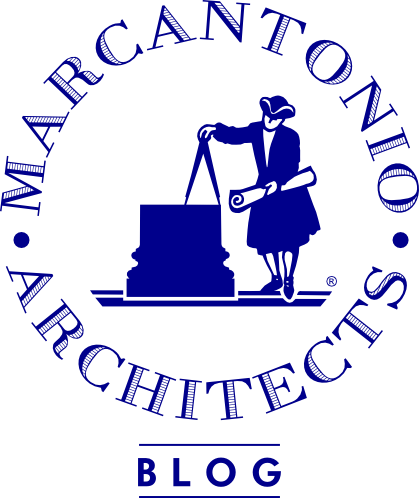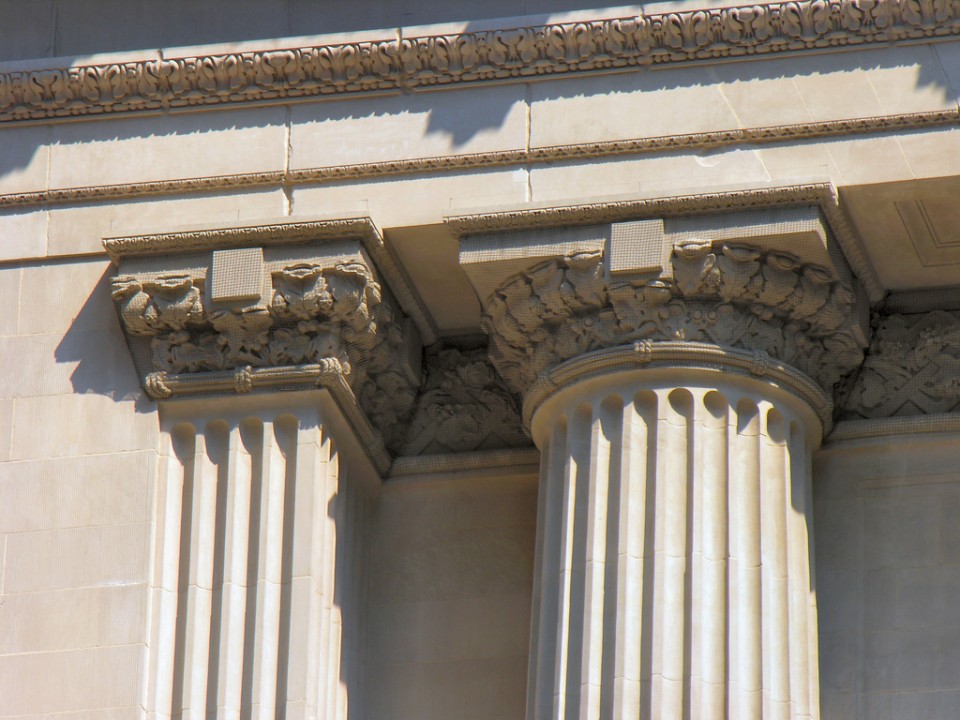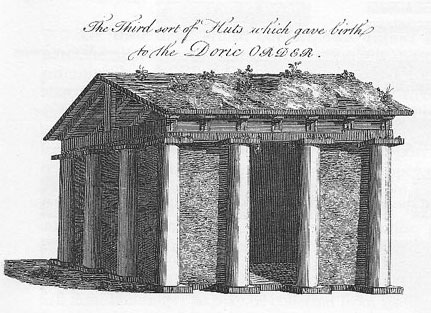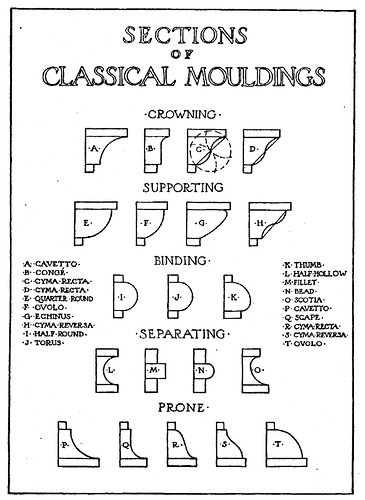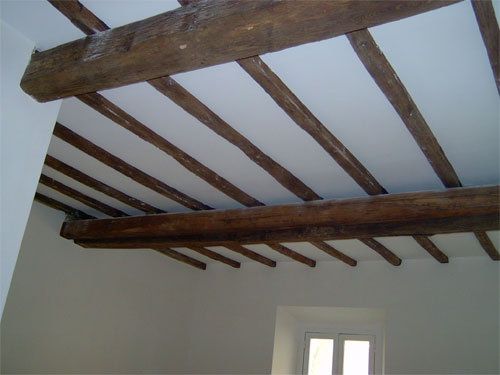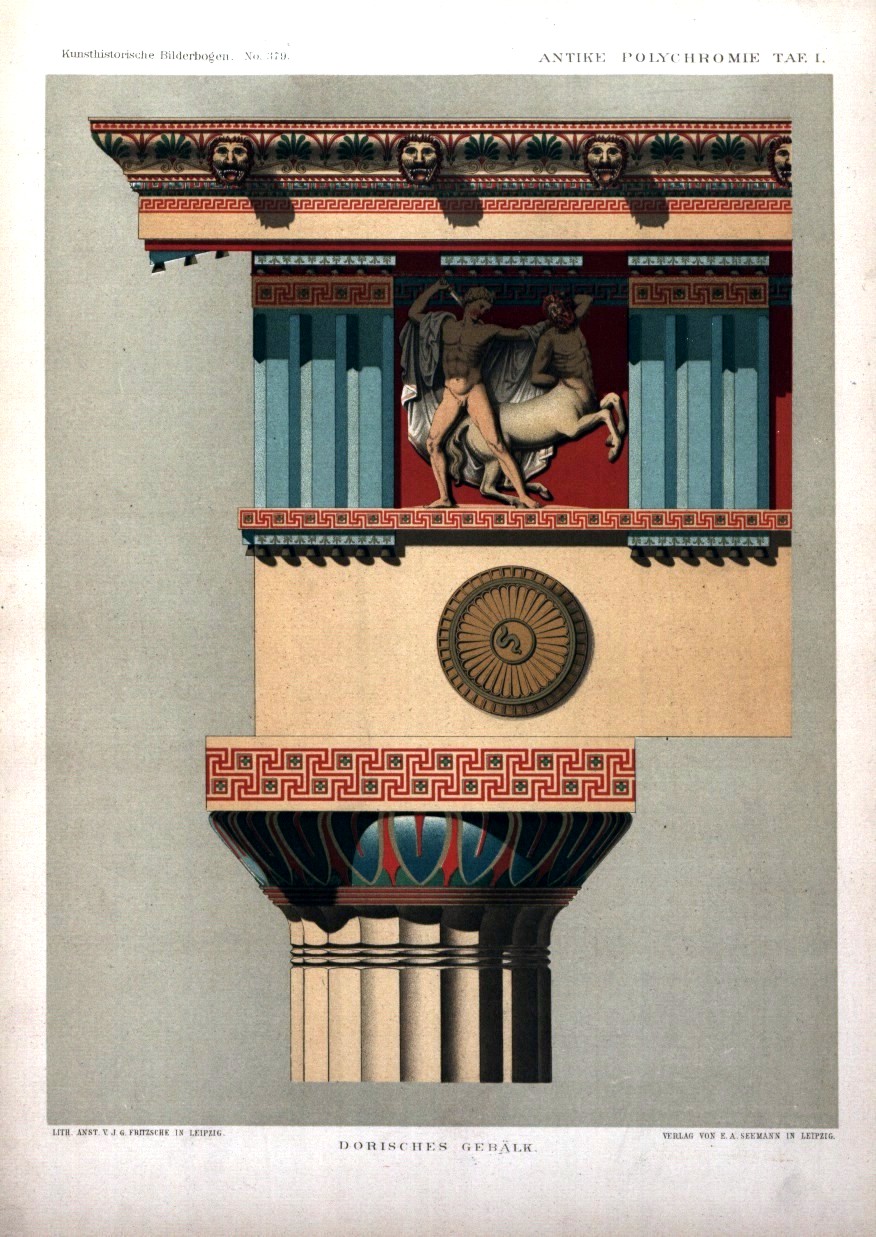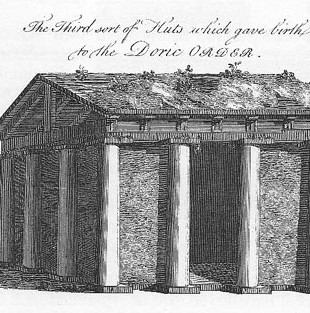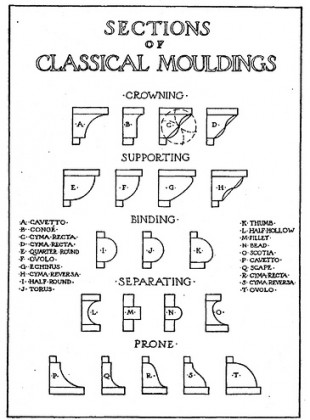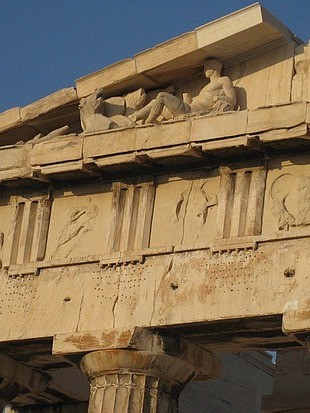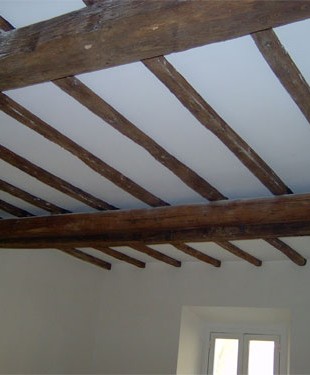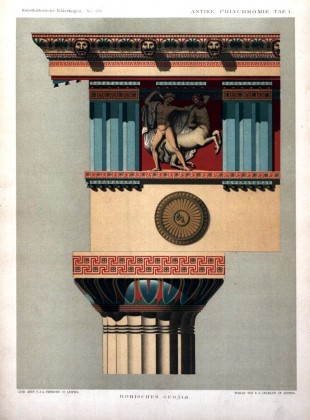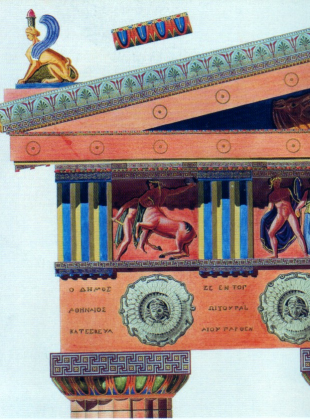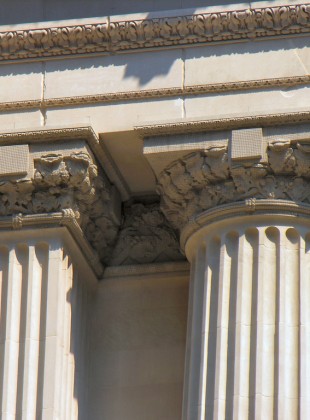The typical explanation for the origin of the Doric order starts with the idea, depicted below by Sir William Chambers, that the ancient Greeks had developed traditions of joinery which were later commemorated in stone (once they were capable of building monumentally).
Optical refinements were added to the forms originating in joinery, so the theory goes. Moldings are added so that supporting members look like they’re supporting, crowning members look like they’re crowning, and cushioning members look like they’re cushioning. This diagram by Frank Chouteau Brown is one of the most widely circulated:
So with these two ingredients, primitive construction and visual statics, we are supposed to arrive at this, the glorious Doric order:
It’s a seductive theory as it seems to explain everything. The triglyphs derive from primitive beam ends, the mutules from primitive rafter tails, the guttae from pegs securing the beams, etc.
There are three major problems with the theory, however. First, the primitive hut one has to imagine in order to explain the forms seems overwrought and highly unlikely. The beams (judging by the triglyphs) would be much too large, and the rafters (judging by the mutules) would be spaced too closely together. This is the simple, practical solution we expect to find in a primitive roof structure:
There’s no easy way to derive triglyphs and mutules from that. Furthermore, if the triglyph were a decorated beam end, why should it be decorated in precisely that way? Similarly, the echinus of the capital, the curved molding under the topmost square portion (called the abacus), simply cannot be rationalized in wood–no carpenter would ever have any practical reason to carve such a form. Could one argue that the echinus is an example of a molding introduced afterwards in order to resolve the visual problem of a round post meeting a square abacus? Perhaps, except that the typical Greek echinus has a quirk at the top, a sort of indent, which appears to call into question the idea of pure visual support. Why the quirk when a simple quarter-round molding would do?
Second, there is no archaeological evidence to support the case that there was a primitive hut which inspired the architectural forms. In fact, as Barbara Barletta argues very convincingly in her book The Origins of the Greek Architectural Orders, the evidence suggests exactly the opposite: the forms do not have a single root, like a supposed primitive hut, but rather a whole network of roots stretching to many different places and to different times. Some of these forms may originate in an imagined primitive construction (there is no definitive proof as the wooden models perished long ago), but most seem clearly to have iconographic origins.
Third, many of the moldings we see in the most celebrated models from antiquity do not follow the rules of visual statics. The Parthenon, for example, is crowned not by one of the crowning moldings as Brown describes them, but rather with an echinus or shallow ovolo. We also find beak moldings, supposed by some to be a drip to shed water, in places where no drip is necessary: under the corona and even under the echinus of a column capital.
In our search for iconographic origins we are hampered tremendously as the paint which once covered these ancient masterpieces has almost entirely disappeared. What we see now, the marvelous white Pentelic marble, is practically a blank canvas. Perhaps, rather than thinking of ornament as an additional layer over top of a basic molding which imitates primitive joinery or responds to the demands of visual statics, we should think of the ornaments as primary with the moldings in a supporting role. For example, in the design of the Doric capital, maybe what was wanted was a place for leaves to sprout, as though the column were alive. The echinus would be a perfect shape to receive such a painted ornament. Here is a reconstruction of an ancient temple by Jacques Ignace Hittorff showing how it might look.
Likewise, the sima does not crown the building in the expected way; however, it meets expectations perfectly when one takes the painted anthemia and palmettes into account. This reconstruction by Gottfried Semper shows a similar solution. Thanks to the painted ornament, these buildings are crowned beautifully.
I believe it is more likely that the iconographic sources for the Doric order go far beyond primitive joinery and visual statics. More can be explained, and more easily.
What’s more, it seems to me that in the other plastic arts–painting and sculpture–the ancients tried to breathe life as much as possible into inanimate matter. Shouldn’t we expect the same of architecture? To imitate a primitive hut is to imitate a dead thing, like the machines imitated in so much modern work. In antiquity buildings were alive and grew flowers, leaves, scales, paws, and heads. This was the consistent approach in the West–until the Enlightnement mind saw the cosmos as a sophisticated perpetual motion machine rather than as a living thing. Our best buildings imitate the living universe, and in making them, we imitate the living God.
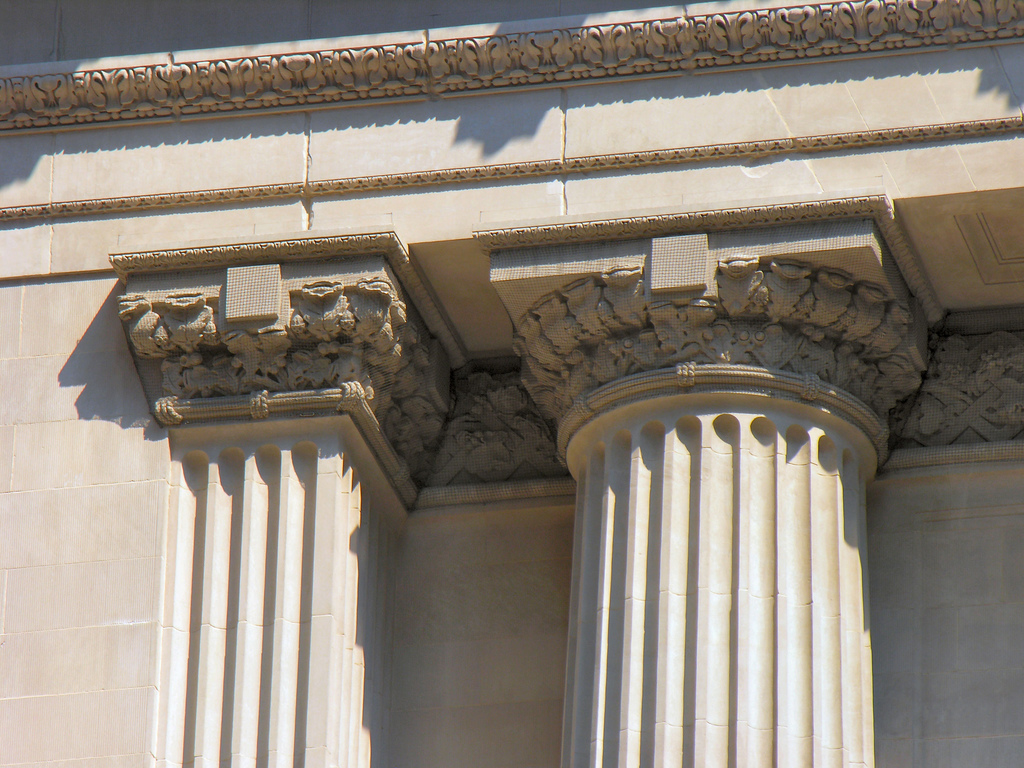
The Doric capital at Grand Central Station, New York City, shows sculpted leaves where the ancient Greeks would have painted.
Tags: architecture, design, doric, orders
